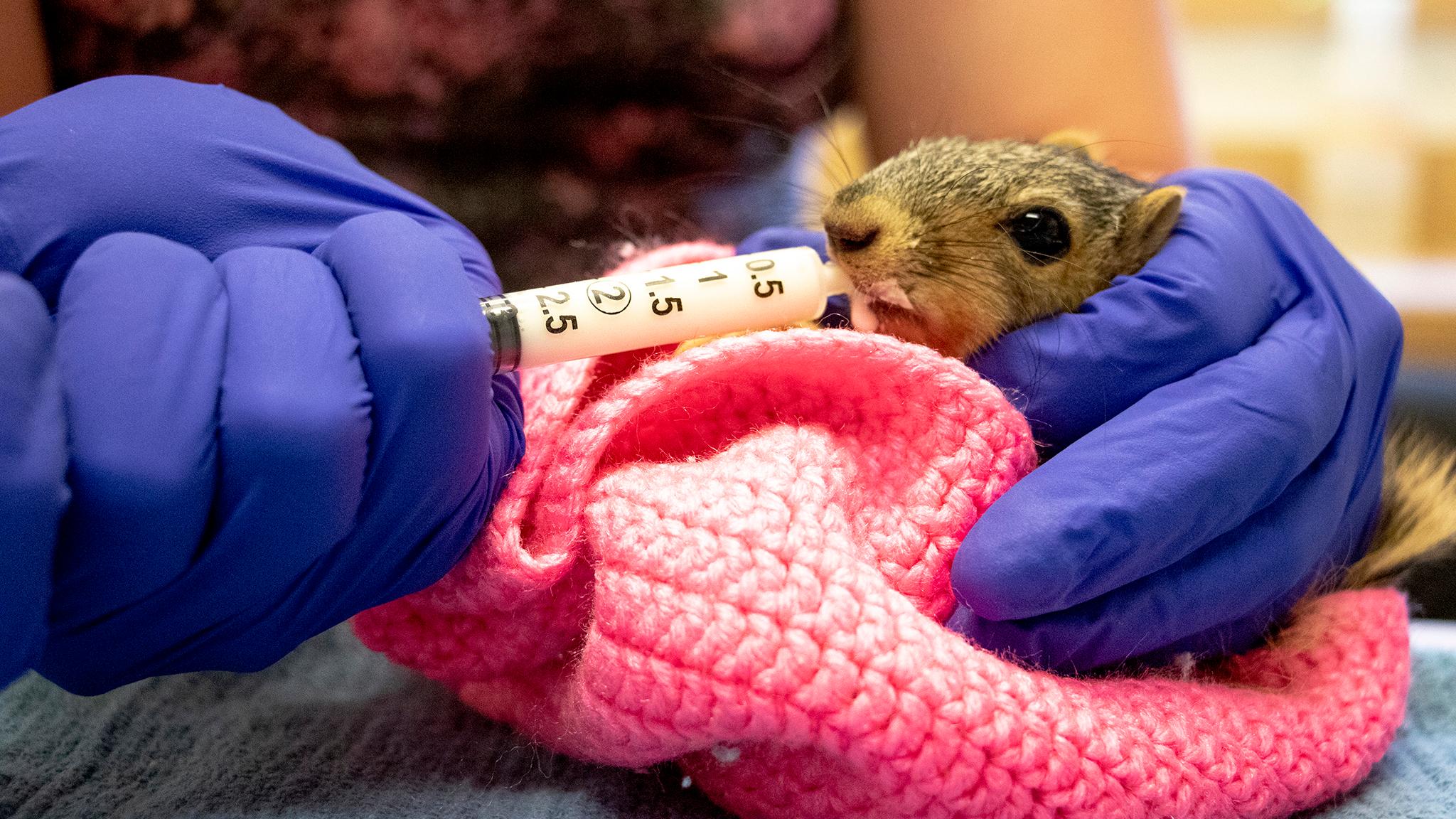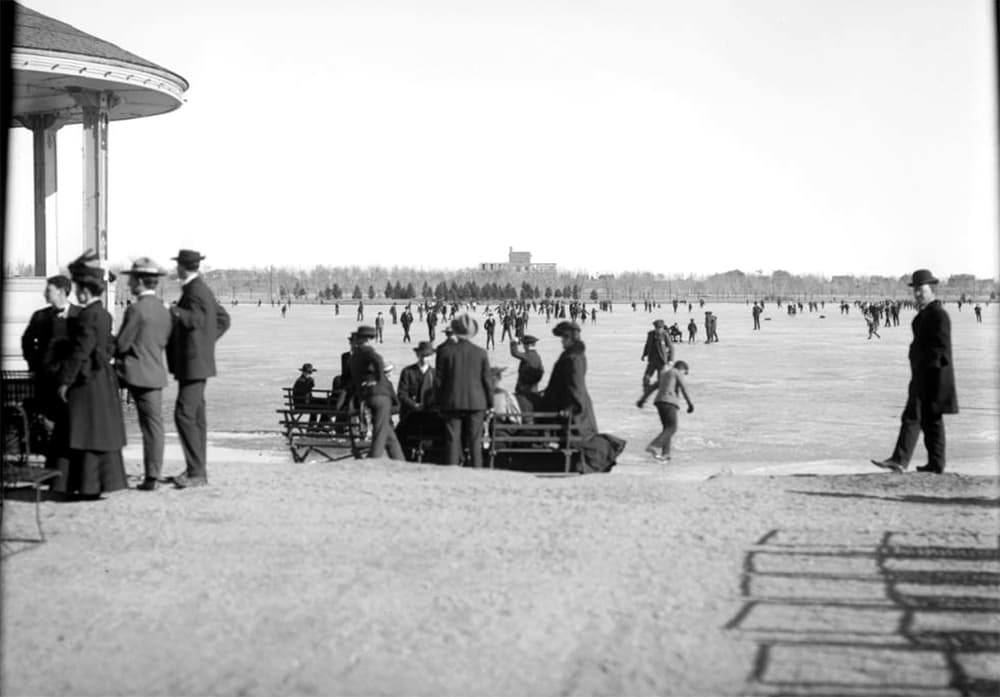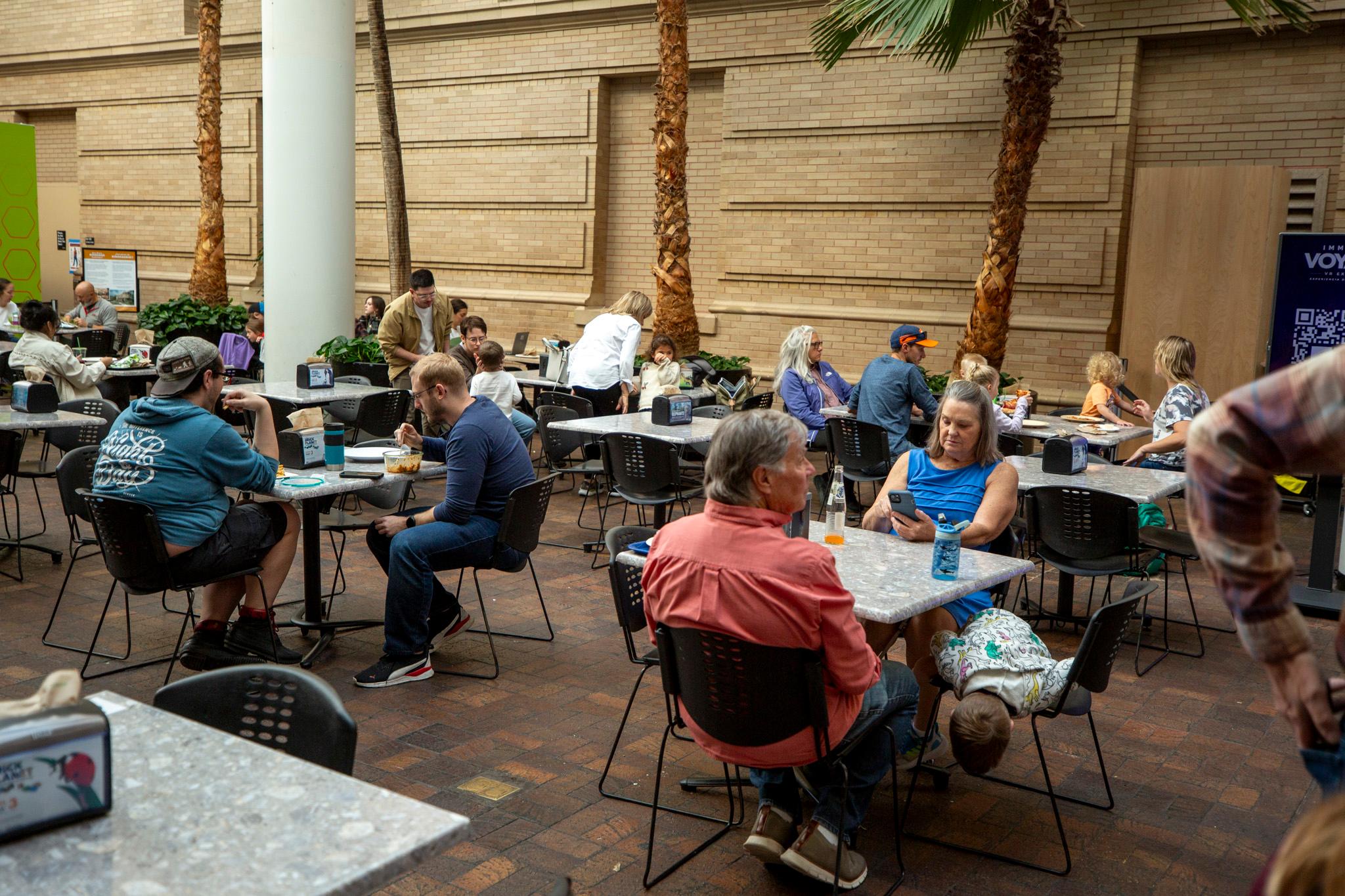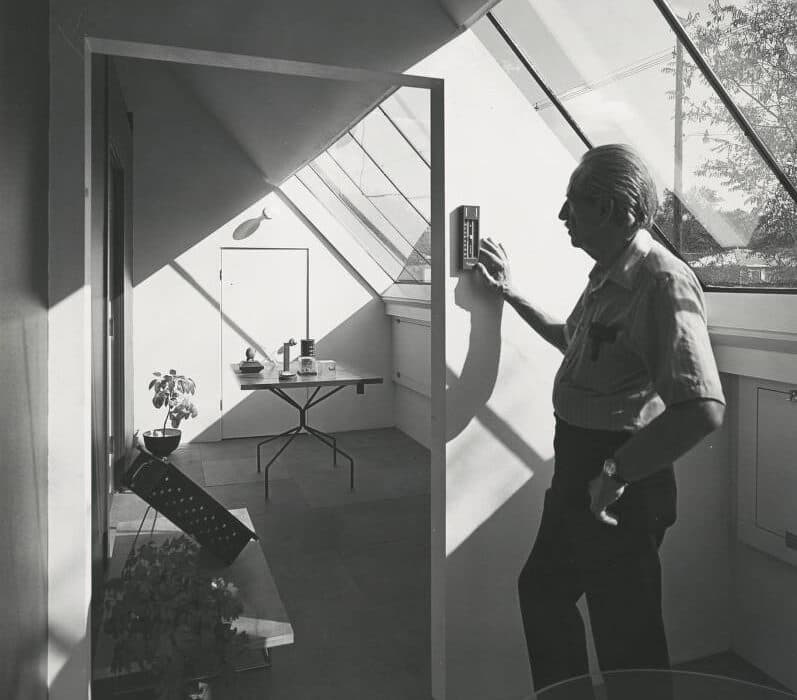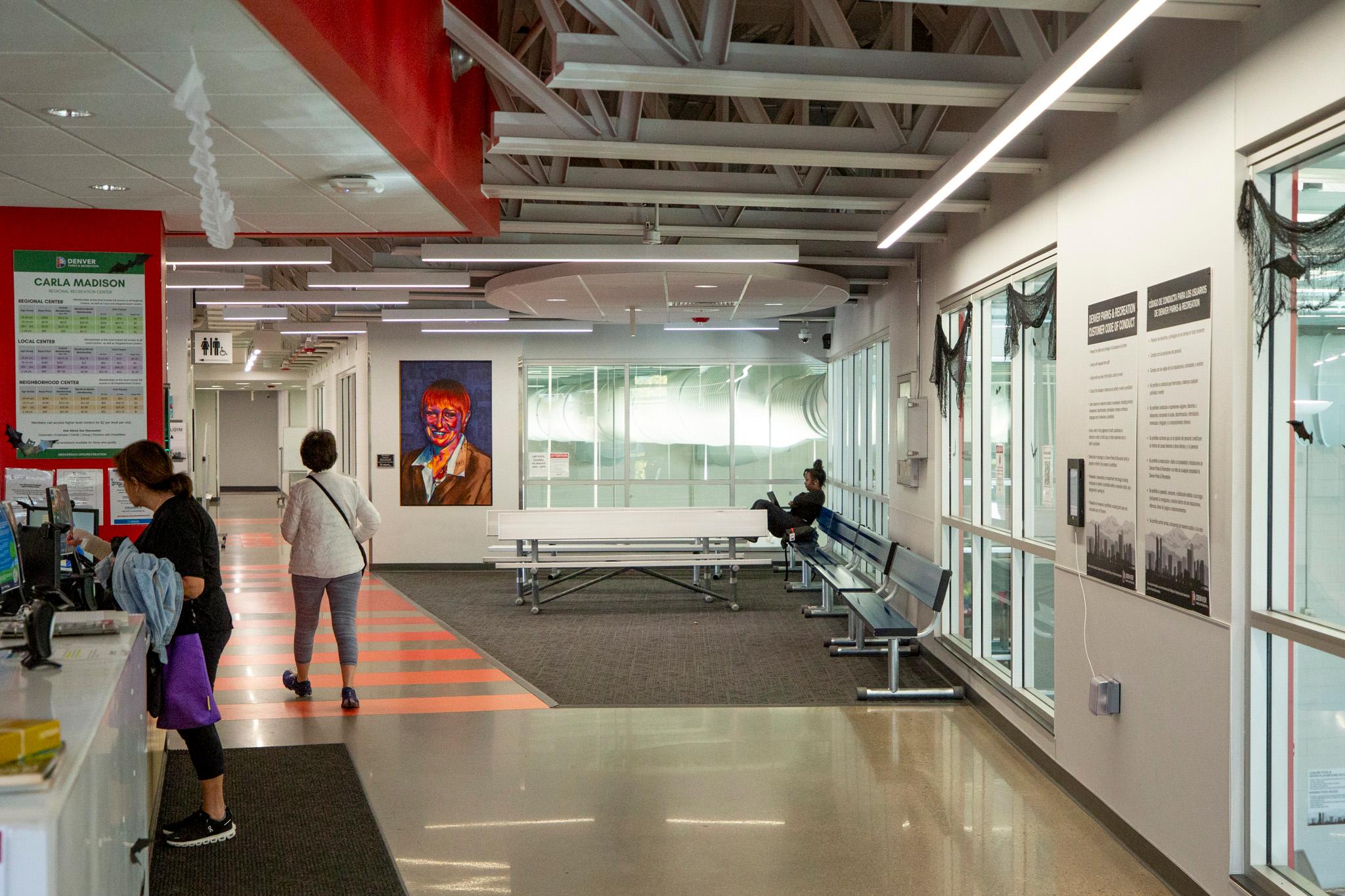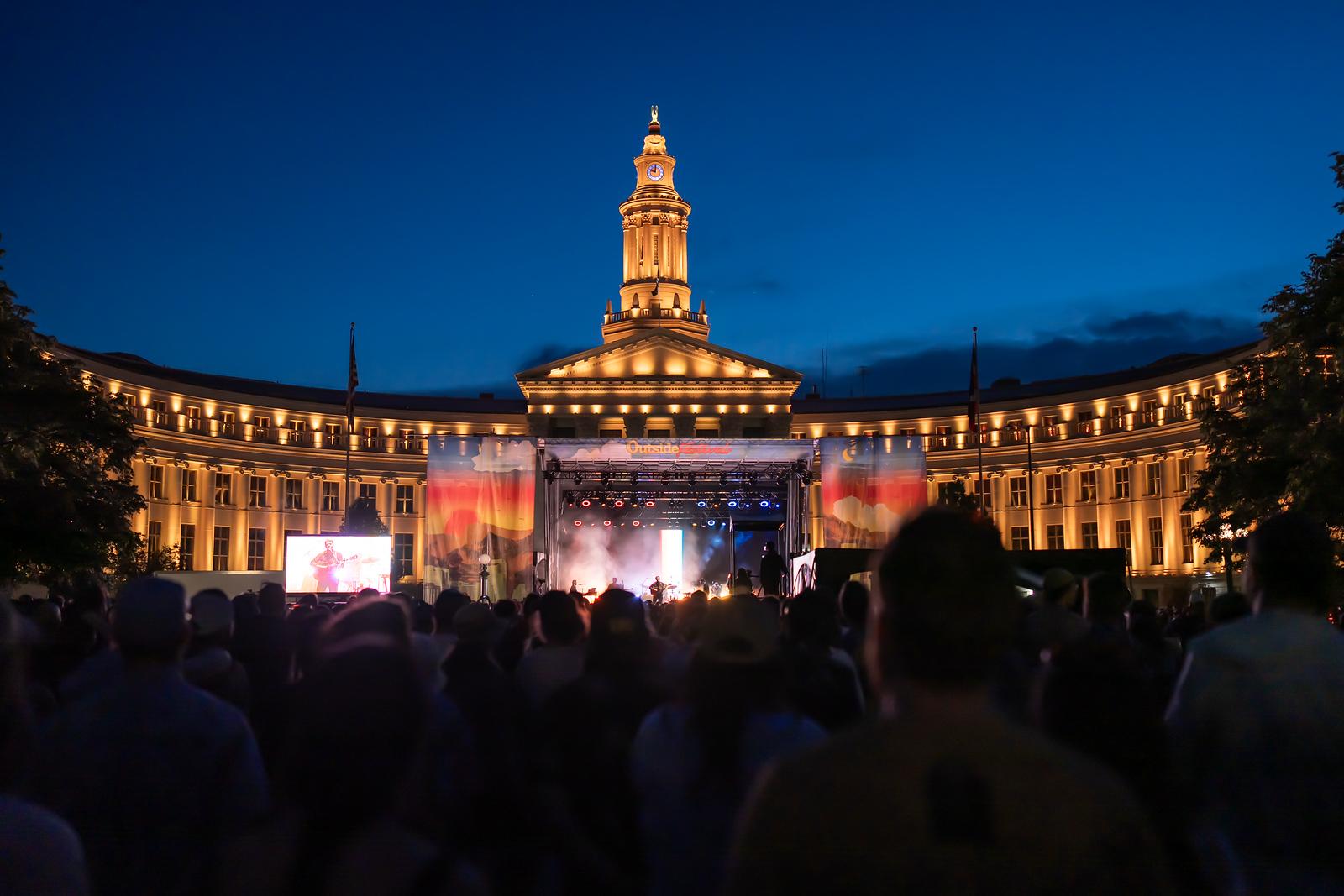Despite our big-city trappings, Denver is, without a doubt, a wild ecosystem. And beyond the squirrels, bunnies and birds you see living quiet lives in parking lots and beneath bushes, there's an entire infrastructure of human activity to manage them.
Most of the time, animals enter these human networks when they're injured. While some species have thrived in the urban environment, many cannot avoid contact with cars, windows or pets. Those who do end up in one or all three stages of Denver's wildlife management: rescue, rehabilitation and afterlife in the Denver Museum of Nature and Science. Here's how it all goes down.
Stage 1: Rescue
Jay LaPointe has seen it all. As a longtime officer with the city's animal protection service, he's dealt with everything from stray dogs to nests of rabid skunks.
Most of the time, he and his colleagues respond to calls that have to do with pets: welfare checks on backyards, tickets for off-leash dogs, stuff like that. While on patrol in May, he had to chase a rooster back into someone's yard and leave a note with his number written on it (they're illegal in the city). But the job also often involves handling wild animals that have ended up in harm's way.
That day in May, he helped a colleague pick up a common poorwill, a bird often mistaken for an owl, who'd gotten caught in a spring storm and holed up next to a dumpster in the Wells Fargo Center's downtown garage.
"We get that all the time," he said. "Birds, squirrels, raccoons, skunks. You name it."


According to the department's data, Denver Animal Protection receives an average of 20,000 calls every year. About 1,000 of those are for wildlife encounters, and though that's only 5 percent, nearly all of those logged are labeled as "urgent."
That, says Lieutenant Josh Rolfe, is because their "threshold to respond" is if the animal is injured or sick, something that requires immediate assistance. Everything else is left off their ledgers.
"When it comes to wildlife, our stance in agreement with Colorado Parks and Wildlife is 'live and let live,'" Rolfe said. This means operators have to decline aid to residents who call just because an animal took residence in their yard.
The urgent calls come in waves throughout the year. For instance, springtime is baby season, when young birds, skunks and raccoons can easily be separated from their mothers before they're able to survive on their own.



In 2018, the department received the highest volume of wildlife calls in the last five years, despite the fact that the overall number of animal reports -- including domestic calls -- were lower than usual.
As a city grows, Rolfe said, natural habitat areas tend to decrease, though he added he thought Denver is doing "a really good job" with maintaining open space for animals. (Maybe too good, since accruing numbers of permanent geese residents in local parks made it necessary to cull them.)
"So far, we haven't seen a really big problem with the wildlife," he said, despite the city's rapid expansion.
Stage 2: Rehabilitation
When Denver Animal Protection picks up an injured animal, or if residents do it themselves, the critter is usually referred to a local animal rehab center. There are currently no licensed rehabbers with public addresses in Denver listed in Colorado Parks and Wildlife's directory. Many animals must be transported to clinics in nearby cities.
Greenwood Wildlife Rehabilitation Center in Longmont is one of the largest, home to 17 of the 59 rehabbers licensed in the state.
Chelsea Barrett, a development manager with the center, said about 35 percent of the animals they treat come from metro area (which includes Adams, Arapahoe, Broomfield, Denver, Douglas and Jefferson counties). She estimates numbers from the area have grown about 10 percent over the last ten years. She partly attributes this to growth, but recent closures of other rehab centers have also sent more animals into their care.
"The amount of people in Colorado has grown and as a result, we have seen numbers rise," she said. "A lot more humans in Colorado are outside recreating and running into wildlife."


About a week ago, I transported a baby squirrel from Five Points up to Greenwood. A woman had found it when she was out walking her dogs and kept it wrapped in a towel in a plastic bin, with food and water, as they waited for me to pick it up.
Tallon Nightwalker was waiting for us in Longmont when we arrived. The squirrel was badly dehydrated. Separated from its mother, it likely could have died in the following days if it wasn't rescued. Nightwalker injected it with saline to help with dehydration, checked it for parasites, inspected its mouth and eyes and then wrapped it in a knit nest to rest. After it's nursed back to health and matures a little longer, it will be released back into the wild; Greenwood does not keep animals longer than it has to.
All the time, he said, people ask him why it's worth bothering to save a squirrel.
"It's a human that hurt it, it should be a human that helps it," he said.
Urban wildlife live surrounded by human-made threats. Even cat attacks, which account for most of the creatures he treats from Denver, count as "a human-caused injury."
"It's different when a hawk is attacking a squirrel and eating it and providing food for its young. Sure, let nature take its course. But getting hit by a car, getting attacked by a cat or a dog," he said, "that is not nature taking its course."



Sometimes, compassionate care means euthanizing animals. Shortly after Nightwalker dealt with the squirrel, a prairie dog was brought into his exam room. It was hit by a car, which shattered its jaw and broke a tooth down to the root. Just one of these conditions would have required euthanasia.
It was quick and quiet. After they inspected the creature, Nightwalker and his colleague, Amanda Manoa, held it down as they injected it with enough anesthetic to cause an overdose. It went to sleep, and then it died.
Manoa said this part of the job used to get to her.
"We get into this line of work because we want to help animals," she said. "It took me a long time to figure out that it was the kindest thing to do."
The alternative would be leaving a defenseless animal to suffer and likely die in the wild.

Sometimes, though, animals at Greenwood must be euthanized as a result of state and federal regulation.
For instance, Barrett said, they're currently only allowed to house 85 raccoons at any given time. They've hit capacity three times in the last three years. If someone brings in an 86th, they have no choice but to put it down.
Barrett said Greenwood's staff does their best to coach people calling about raccoons to bring them back to their nests, which could result in them reuniting with their families. Sometimes, though, it's impossible to avoid a "painful outcome."
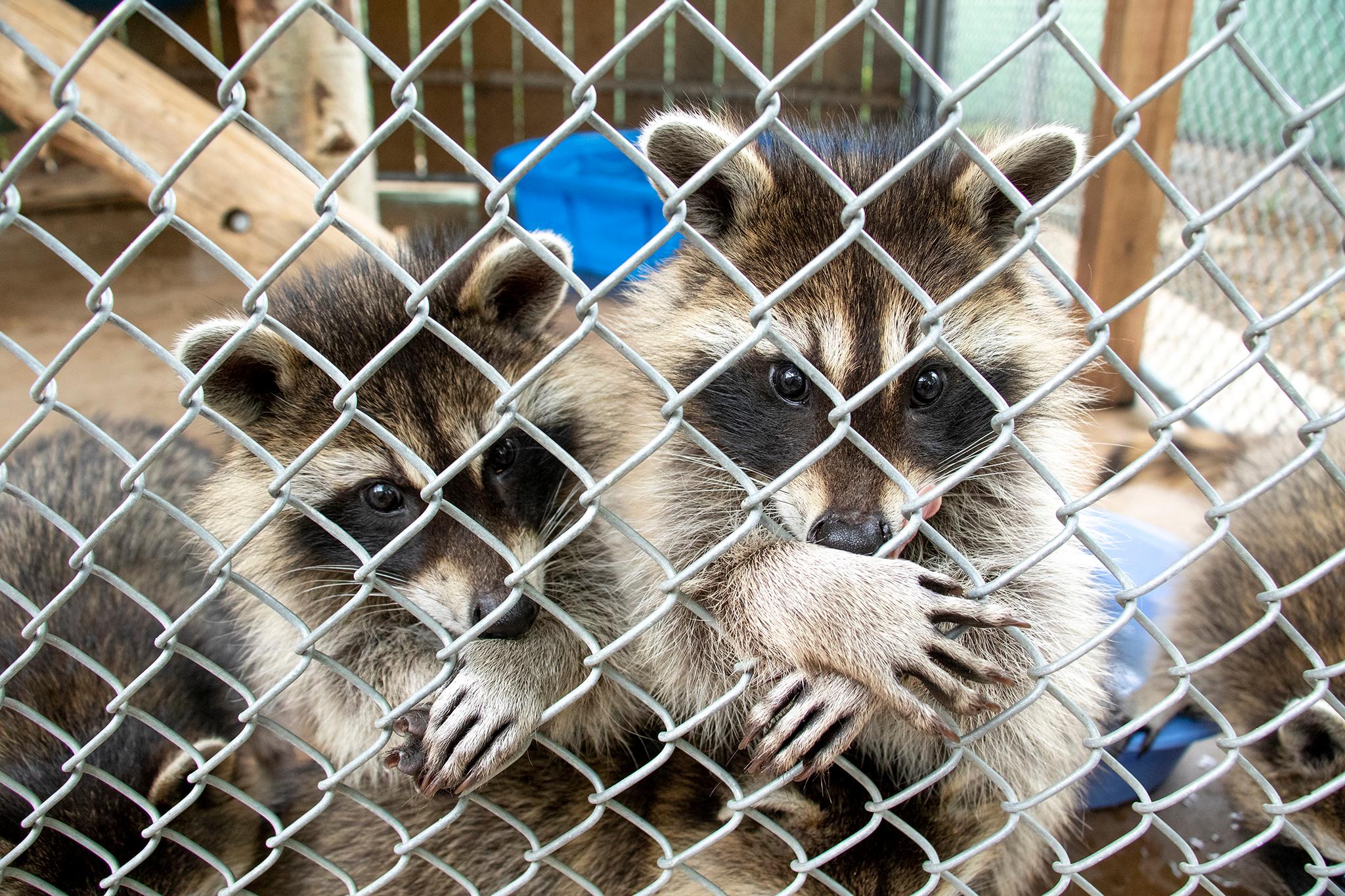
Greenwood's distance from Denver and the rising numbers of injured animals has created a need for more space. Their leadership has recognized this, and they've been working on an expansion for the past two years.
But a new facility near the city will be expensive. As regional growth has resulted in rising animal injuries, it's also driven up the cost of land. Barrett is hoping someone will give them a good deal on a couple of acres closer to Denver.
Wild Bird Rescue and Rehab, a crow and magpie rehabber in Wheat Ridge, also tried to move closer into Denver in the last year. They were "devastated" when they learned the facility they hoped to move into wasn't up to code, so they scrapped their plans. According to their website, they're also looking for someone to help them find a spot in the city they can expand into.
Stage 3: Afterlife
The story isn't over for animals that don't make it. The prairie dog put down at Greenwood and many creatures found dead by local authorities end up at the Denver Museum of Nature and Science, where they're dissected, preserved and logged for future study.
The museum's freezers are full of animals waiting to be processed. There are about 106,000 specimens accounted for in their collections database, some of which date back more than a century. About 44,000 of these come from Colorado, and about 6,700 come from the Denver metro area (within the 470 beltway). But the proportion of local specimens is growing as the museum has built relationships with rehabbers like Greenwood to keep their fridges full.



Denverite took a field trip to the museum's lab in June. John Demboski, an evolutionary biologist and the museum's curator of vertebrate zoology, gave us the tour. When animals leave storage, they first enter the hands of volunteers who dissect the specimens and separate bones, skin and muscles. The bones go next into a drying room, and then into a bin full of flesh-eating beetles that clean them to completion. Bones and bodies are stored separately - the latter may end up pinned to boards - and stored.
But the amassed data behind all these accessions is the real prize. The records are online and available for researchers around the world to study. Demboski said the information is used all the time.
Horned larks represent the most-collected species from the Denver area. This is likely due to the fact that they're the species most often hit by planes at DIA, which has the most wildlife casualties of any airport in the nation. The airport is the most represented source of dead animals from Denver in the museum's collection: 750 animals were collected from the Denver area in 2016 - of those, more than 100 came from DIA.
Fox squirrels, desert cottontails and pigeons are also in the list's top 10. The museum's collection also houses animals that die at the Denver Zoo.




While Demboski and his museum colleagues don't focus on urban wildlife in their research, it's an area of study that he says is growing fast.
If, for example, future researchers want to know how Denver's rapid growth has affected wildlife, all they'd need to do is log in and start searching. The museum's active collection in the present will ensure scientists of the future will have a wealth of data to parse.
"If there is change, you see patterns, then the next thing you ask is, well, why is there a change? Is it climate change? Is it humans? Is it just urban sprawl?" he said.
These factors may either help or hurt species as they continue to evolve.
"There's a lot of animals doing just fine here," Demboski said. While some have disappeared, "A lot of animals have adapted."
Manoa, the Greenwood rehabber, said she's glad the prairie dog she had to put down will live on in the museum's collection.
"They get used again, which makes me feel better about them coming here," she said. "Their little lives mean something more."

